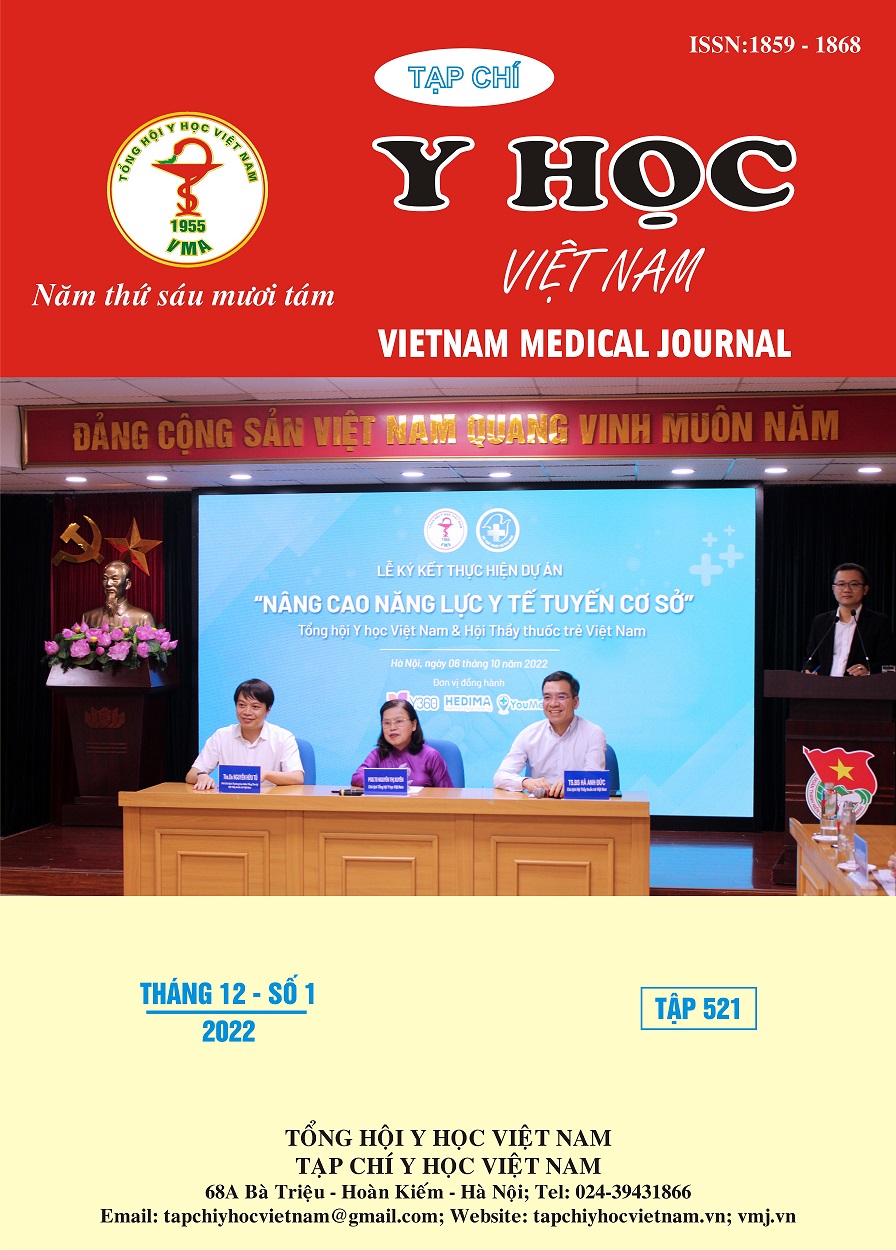ĐÁNH GIÁ GIÁ TRỊ CỦA CỘNG HƯỞNG TỪ TRONG CHẨN ĐOÁN HẸP ĐƯỜNG MẬT
Nội dung chính của bài viết
Tóm tắt
Mục tiêu: Nghiên cứu giá trị của cộng hưởng từ (CHT) trong đánh giá hẹp đường mật và chẩn đoán phân biệt nguyên nhân hẹp lành tính hay ác tính. Đối tượng và phương pháp nghiên cứu: Nghiên cứu mô tả cắt ngang, hồi cứu và tiến cứu gồm 75 bệnh nhân (BN) với 76 tổn thương hẹp đường mật tại Bệnh viện Đại học Y Hà Nội từ tháng 01 năm 2021 đến tháng 07 năm 2022. Kết quả: CHT chẩn đoán có độ nhạy và độ chính xác lần lượt là 97.3% và 94.7%% trong chẩn đoán hẹp đường mật so với chụp đường mật qua da (CĐMQD). Giá trị κ đánh giá sự đồng thuận giữa CHT và CĐMQD trong mô tả các đặc điểm hình ảnh của hẹp đường mật cho thấy có sự đồng thuận tốt (0.4 - 0.7). Các đặc điểm bờ không đều, không đối xứng, hạn chế khuếch tán của tổn thương hẹp đường mật trên hình ảnh CHT có ý nghĩa trong chẩn đoán nguyên nhân ác tính với độ chính xác lần lượt là 85%, 85% và 90% (p < 0.01). Kết luận: Cộng hường từ là một phương pháp có độ chính xác cao trong chẩn đoán hẹp đường mật so với CĐMQD và có ý nghĩa trong chẩn đoán nguyên nhân hẹp lành tính hay ác tính.
Chi tiết bài viết
Từ khóa
Hẹp đường mật, cộng hưởng từ, cộng hưởng từ mật tụy, chụp đường mật qua da
Tài liệu tham khảo
2. Park M.-S., Kim T.K., Kim K.W. và cộng sự. (2004). Differentiation of extrahepatic bile duct cholangiocarcinoma from benign stricture: findings at MRCP versus ERCP. Radiology, 233(1), 234–240.
3. Kim J.Y., Lee J.M., Han J.K. và cộng sự. (2007). Contrast-enhanced MRI combined with MR cholangiopancreatography for the evaluation of patients with biliary strictures: Differentiation of malignant from benign bile duct strictures. Journal of Magnetic Resonance Imaging, 26(2), 304–312.
4. Yu X.-R., Huang W.-Y., Zhang B.-Y. và cộng sự. (2014). Differentiation of infiltrative cholangiocarcinoma from benign common bile duct stricture using three-dimensional dynamic contrast-enhanced MRI with MRCP. Clin Radiol, 69(6), 567–573.
5. Phạm Văn Anh (2014), Đánh giá kết quả phẫu thuật có tán sỏi điện thủy lực điều trị sỏi đường mật trong gan có chít hẹp đường mật, Luận văn Thạc sỹ y học, Trường Đại học Y Hà Nội.
6. Đỗ Hải Đăng (2020), Đánh giá kết quả phẫu thuật lấy sỏi trong gan và tán sỏi điện thủy lực ở bệnh nhân có hẹp đường mật tại khoa Gan mật bệnh viện Việt Đức, Luận văn Thạc sỹ y học, Trường Đại học Y Hà Nội.
7. Nguyễn Hữu Thịnh, Đỗ Đình Công, Nguyễn Việt Thành (2006). Chẩn đoán sỏi và hẹp đường mật trong gan bằng cộng hưởng từ đường mật. Tạp chí Y học Thành phố Hồ Chí Minh, 10(1), 18–21.
8. Suthar M., Purohit S., Bhargav V. và cộng sự. (2015). Role of MRCP in Differentiation of Benign and Malignant Causes of Biliary Obstruction. J Clin Diagn Res, 9(11), TC08-TC12.
9. Rabie S., Mohallel A., Bessa S.S. và cộng sự. (2021). The role of combined diffusion weighted imaging and magnetic resonance cholangiopancreatography in the differential diagnosis of obstructive biliary disorders. Egypt J Radiol Nucl Med, 52(1), 1–13.


